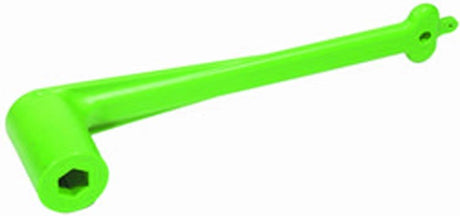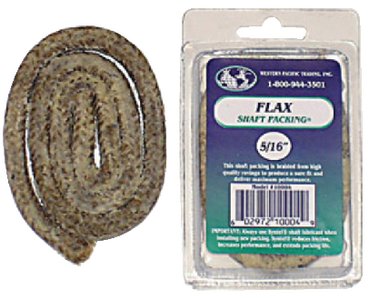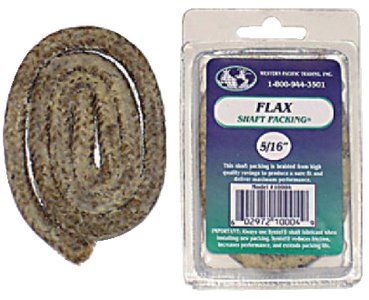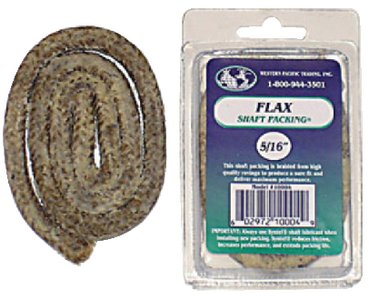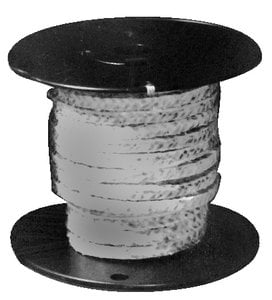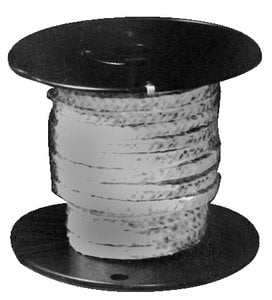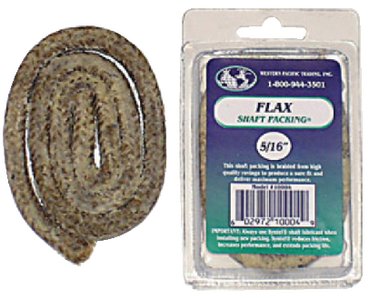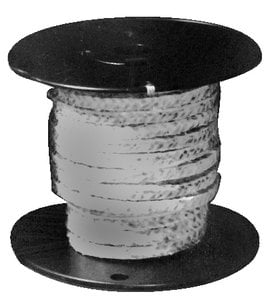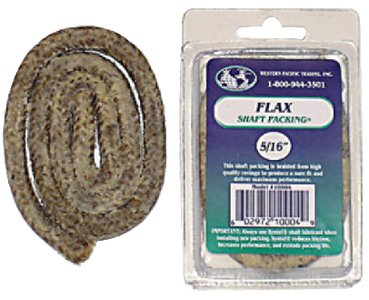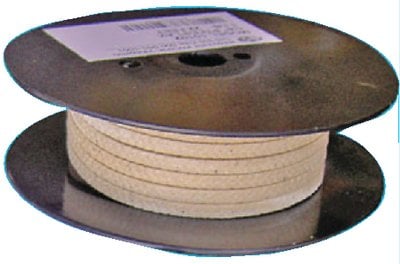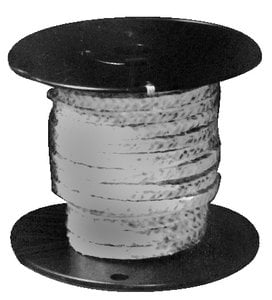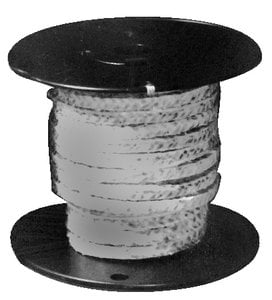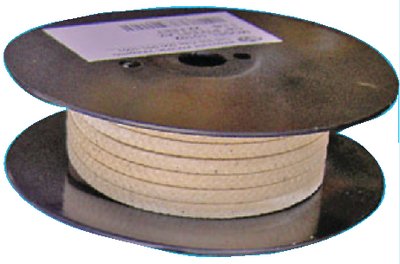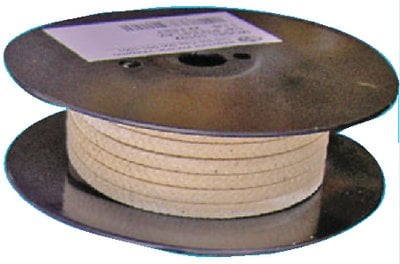-
Turning Point Propellers
Turning Point Propellers - 500 Series Hub Kit System - 506 Evinrude/Johnson/Suzuki - 11500600
$63.02$74.00Unit price /Unavailable -
MORSE BEARINGS
Morse Bearings - 1-3/4 X 2-3/8 X 7 Brass Bearing - GROUPER
$160.40$221.49Unit price /Unavailable -
SOLAS
New Saturn Propeller: Yamaha - Stainless Steel , 11-1/8 x 13 , 40-60 HP, 13 Tooth Spline
$296.59Unit price /Unavailable -
Mercury
$18.01$21.20Unit price /Unavailable -
-
-
-
-
-
-
-
-
-
-
-
-
-
-
WESTERN PACIFIC TRADING
Western Pacific Trading - Flax Packing 1/8 X 2' - 10001
$4.17$4.19Unit price /Unavailable -
WESTERN PACIFIC TRADING
Western Pacific Trading - Flax Packing 1/4 X2' Retail - 10003
$6.19$6.59Unit price /Unavailable -
WESTERN PACIFIC TRADING
Western Pacific Trading - Flax Packing 3/16 X2' Retail - 10002
$5.17$5.59Unit price /Unavailable -
WESTERN PACIFIC TRADING
Western Pacific Trading - Flax Packing 3/8X2 - 10019
$14.22$21.29Unit price /Unavailable -
WESTERN PACIFIC TRADING
Western Pacific Trading - Flax Packing 1 Lb 1/2 - 10106
$54.17$69.19Unit price /Unavailable -
WESTERN PACIFIC TRADING
Western Pacific Trading - Flax Packing 5/16 X2' Retail - 10004
$7.59$7.99Unit price /Unavailable -
WESTERN PACIFIC TRADING
Western Pacific Trading - Flax Packing 1 Lb 5/16 - 10103
$54.17$69.19Unit price /Unavailable -
WESTERN PACIFIC TRADING
Western Pacific Trading - Flax Packing 1/4X2 - 10017
$7.88$8.69Unit price /Unavailable -
WESTERN PACIFIC TRADING
Western Pacific Trading - Flax Packing 1 Lb 3/16 - 10101
$54.17$69.19Unit price /Unavailable -
WESTERN PACIFIC TRADING
Western Pacific Trading - Flax Packing 7/16 X 2' - 10006
$9.81Unit price /Unavailable -
WESTERN PACIFIC TRADING
Western Pacific Trading - Flax Packing 1 Lb Spool 3/8 - 10054
$20.64$34.99Unit price /Unavailable -
WESTERN PACIFIC TRADING
Western Pacific Trading - Flax Packing 1 Lb 1/4 - 10102
$54.17$69.19Unit price /Unavailable -
WESTERN PACIFIC TRADING
Western Pacific Trading - Flax Packing 3/16X2 - 10016
$6.91$7.49Unit price /Unavailable -
WESTERN PACIFIC TRADING
Western Pacific Trading - Flax Packing 1 Lb Spool 1/4 - 10052
$20.64$34.99Unit price /Unavailable -
WESTERN PACIFIC TRADING
Western Pacific Trading - Flax Packing 1# 1/2" X 8' - 10056
$20.64$34.99Unit price /Unavailable -
WESTERN PACIFIC TRADING
Western Pacific Trading - Flax Packing 1 Lb 3/8 - 10104
$54.17$69.19Unit price /Unavailable -
WESTERN PACIFIC TRADING
Western Pacific Trading - Flax Packing 5/16X2 - 10018
$10.76$11.49Unit price /Unavailable -
WESTERN PACIFIC TRADING
Western Pacific Trading - Flax Packing 1 Lb Spool 3/16 - 10051
$20.64$34.99Unit price /Unavailable
Outboard Propellers and Prop Hardware Resources and Information
Choosing the correct propeller is critical to speed, fuel economy, acceleration, and handling. PartsVu stocks outboard propellers and prop hardware from trusted brands like Turning Point, Solas, Acme, and Michigan Wheel — so you can match pitch, diameter, and blade design to your engine and hull. Need install help? See our prop install guides on the PartsVu Xchange.
Browse our entire selection of aftermarket outboard parts and products and accessories, or shop outboard propellers and prop hardware by category, including:
- Solas Propellers
- Acme Propellers
- Michigan Wheel Propellers
- Propeller Nuts, Washers & Hardware
- Propeller Wrenches, Pullers & Tools
- Turning Point Propellers
Prop types at a glance: Aluminum (great value, easy to service), Stainless steel (stiffer blades for better bite and durability), 3-blade (top speed/efficiency), 4-blade (quicker hole-shot, more lift/grip in rough water), 5-blade (ultra-smooth, towing), cupped/high-rake designs (added bow/stern lift, better grip in turns), vented/barrel-ported (helps two-strokes spool RPM on takeoff).
Diameter & speed: larger diameter increases grip and load-carrying but lowers RPM/top-end; smaller diameter frees RPM/top-end but may slip more — balance diameter with pitch to hit your engine’s WOT range.
WOT tuning tip: if your current prop misses the WOT range by ~300–400 RPM, a 2″ pitch change typically moves WOT by ~300–400 RPM in the opposite direction (lower pitch = higher RPM; higher pitch = lower RPM).
Solas vs. Turning Point: Solas offers broad fitment with proven stainless and aluminum lines known for durability and smooth cruise. Turning Point focuses on crisp hole-shot and lift with efficient blade geometry; many models use modular hubs for easier re-hubbing. Either brand can be “best” depending on whether you prioritize top-end and cruise smoothness (Solas) or acceleration and lift (Turning Point).
Common symptoms: Ventilation (RPM spikes, speed drops in turns) — engine too high or damaged edges; Cavitation (pitted blade faces) — rough leading edges or mismatch to hull; Spun hub (engine revs, boat won’t go)—replace hub; Bent blade (vibration) — repair/replace; Wrong pitch (can’t reach WOT or over-rev) — re-pitch; Engine height (poor bite) — adjust mounting holes one step at a time.
DIY swap essentials: socket or [prop wrench] for your nut size, pliers for the cotter pin, marine grease for splines, and a spare thrust washer; remove cotter pin, nut, and hardware in order, slide prop off, clean/grease splines, reassemble in the same order, torque the nut, and fit a new cotter pin.
Why is a boat propeller so important?
- Performance: The propeller is the only part that actually moves your boat forward, directly affecting top speed and acceleration.
- Efficiency: The right boat prop improves fuel economy by keeping your engine in its optimal RPM range.
- Handling: Blade design, pitch, and diameter all influence lift, cornering, and smooth operation.
- Protection: Using the wrong propeller (over-propping or under-propping) can cause long-term engine damage.
At PartsVu, we go beyond offering a wide selection of boat propellers - we also provide resources like propeller pitch guides, installation tutorials, and brand comparisons to help you make the right choice. With fast shipping, expert support, and top-rated brands, PartsVu makes it simple to upgrade or replace your prop with confidence.
Outboard Propellers and Prop Hardware FAQs
How do boat propellers contribute to a boat’s performance on the water?
Besides the tachometer, the propeller(s) is the most important thing on the boat because it is the only thing that moves the boat. Without the correct pitch and diameter, a boat will not perform. Propellers limit the RPM range that motors need to run in. They help control speed, fuel economy, lift, cornering, and hole shot. With such a wide variety of boat, motor, and weight combinations, there are hundreds of boat props to choose from.
Unique hull designs affect the way water flows across the bottom of a boat so having the technical knowledge of propeller design helps ensure that the best selection is made for a given boat. There is a vast difference in propellers’ performance; many consumers do not always understand the performance advantages of selecting a high-quality propeller like Turning Point.
Do the number and size of propeller blades affect boat performance?
Absolutely. Larger and more blades will perform better for work boats that need to push heavier loads. For racing, the high horsepower requires more torque, which leads to a change in diameter, pitch, and the number of blades.
Grabbing more water is what makes a boat propeller more efficient. More blades tend to reduce slip by submerging more of the blade surface area underwater. For multiple engine applications, Turning Point’s OS series has a larger blade diameter that works more efficiently than many of its competitors’ products.
What type of propeller maintenance should boaters do?
Routinely inspect boat propellers for larger knicks and make sure the blades are not bent. Also, remove the propeller every six weeks. Fishing line tends to wrap around behind the thrust washer, which can lead to a seal failure.
With a ball-peen hammer, tap the edge of the washer to knock it loose so the fishing line can be removed. When putting it back together, apply a light coating of grease on the splines.
How do I choose the right propeller for my outboard motor?
The right propeller for your boat and engine combination is based in part on the wide-open throttle (WOT) operating range for your specific engine. This information is an intersection of horsepower and RPM and can be found in your owner’s manual.
An optimal outboard propeller will maximize your boat’s performance while allowing your engine to operate in the recommended RPM range. The correct propeller will prevent the engine from over-revving and facilitate maximum horsepower with minimum RPM.
An outboard engine under load should reach the manufacturer’s recommended RPM at WOT, usually expressed as an RPM range. Your optimal propeller will deliver acceptable acceleration and top speed while still allowing your Yamaha outboard to reach its recommended revs at WOT.
If you get this relationship wrong, premature engine damage is too often the result.
Your propeller decision-making process will include the following factors: pitch, diameter, aluminum or steel, blade number, rake, cupping, and rotation.
Pitch is a critically important factor when selecting a new propeller. Pitch is the distance the prop would travel forward after one complete rotation, assuming no resistance or slip.
Lower-pitch propellers encounter less resistance facilitating faster rotation and enabling hole-shot and acceleration. However, because each propeller revolution generates less forward travel, the ultimate top speed will be lower at WOT.
Hole-shot and acceleration will be reduced with higher pitch props because the outboard propeller encounters more resistance. This said, additional resistance reduces the motor’s RPMs and top speed at WOT.
Generally speaking, increasing prop pitch lowers RPM, while decreasing prop pitch raises RPM.
If you need more speed, a higher pitch is generally the way to go. However, If you use a propeller with a too high pitch, the motor won’t have enough horsepower to turn it adequately, so the revolutions per minute will drop. Referred to as over-propping, it overloads the engine and causes excessive wear. Under-propping—fitting a propeller with too low a diameter or pitch—can damage your engine through over-revving. Under-propping will also adversely affect fuel consumption.
Each outboard propeller has two numbers stamped on them – diameter and pitch. For example, a 14 x 19 propeller has a diameter of 14 inches and a pitch of 19 inches. The greater the diameter, the more resistance it will experience in the water.
A larger diameter propeller reduces the RPM and top-end speed. On the other hand, smaller diameter propellers increase RPM and top-end speed. However, smaller diameter props slip more frequently and are not good choices if hole-shot or acceleration improvement is your goal.
What difference does the number of propeller blades make?
Three Blades Are the most common propellers. They offer good overall performance, top speed, and efficiency for most applications. Four Blades Characteristically provide increased acceleration, enhanced bow- and stern-lift, and reduced ventilation. However, their increased surface area can create drag on the engine, resulting in lower top speeds and potentially different handling. Ventilation is when air is drawn in around the propeller blades. Normally, this increases RPM, but lowers speed, because the propeller blades aren’t biting “clean” water. This usually occurs during hard cornering or in certain water conditions, such as following seas. Controlled ventilation can be beneficial, helping the engine gain RPM during hard acceleration. Engineered into certain propellers, usually two strokes, ventilation can appear as small holes in the side of a propeller barrel. These allow exhaust to intentionally be drawn in around the blades at hole shot, helping two-stroke engines generate the higher RPMs they need for proper hole shot performance. Four-stroke engines typically don’t use built-in ventilation.
What is the propeller rake?
Rake is the angle of the blades in relation to the propeller’s barrel, or center, and is expressed in degrees. A high-rake propeller is best suited for high engine-mount applications. It reduces ventilation and increases bow lift. However, too much rake can negatively impact handling and performance by straining the engine, which will decrease hole shot. A low-rake propeller causes less strain on the engine, resulting in a potentially better hole shot and higher wide open throttle (WOT) operating RPM.
What does the propeller pitch mean?
Pitch is the distance a propeller would travel in one full revolution as if traveling through a solid. Each inch of pitch is equal to approximately 150 RPM, plus or minus 50 RPM. The right propeller will allow your engine, under a normal to heavy load, to reach the upper portion of the WOT range specified by its manufacturer without exceeding it. A lower pitch will have greater acceleration and “pushing power” but a lower top speed. A higher pitch will provide less acceleration, but a greater potential for higher top speeds. Within a particular propeller series, as the diameter increases, the pitch generally decreases.
Does the number of blades affect performance?
Yes. Three-blade props offer good all-around performance. Four-blade propellers improve acceleration, lift, and handling, but may reduce top speed. Five-blade props deliver smoother rides and reduced vibration.
What maintenance does a boat propeller need?
Inspect for nicks, bent blades, or fishing line around the hub. Remove the propeller every few weeks during heavy use and reapply grease to the splines to prevent corrosion.
How do I know if my boat is over-propped or under-propped?
If your engine struggles to reach the recommended RPM range, it may be over-propped (too much pitch/diameter). If it revs too high with poor speed, it’s under-propped. Both situations reduce performance and risk engine damage.
How much does a new propeller cost?
Prices vary by brand, material, and blade count — see product cards in this collection for current pricing.
Can I install a propeller myself?
Yes — most swaps are straightforward with the right tools and torque. If you see shaft damage, severe vibration, or unclear fitment, consult a technician.
PartsVu offers a wide selection of marine propellers, including Turning Point, Solas, Acme Propellers, Michigan Wheel Propellers and more. 3-blade, 4-blade and 5-blade - in a variety of pitches and finishes to help you to achieve your desired performance. We also offer resources like this one over on our blog to help you choose the right propeller for your outboard engine.





